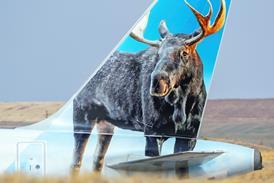After cancelling the Bell Helicopter ARH-70 Arapaho a year ago, the US Army is now formally analysing a wide range of options for replacing the Bell OH-58D Kiowa Warrior.
An EADS North America/Lockheed Martin team and Boeing plan to propose prototypes based on the Armed Scout 645 and AH-6S, respectively. Meanwhile, Bell could propose making significant power upgrades to the single-engined OH-58D or offer a militarised version of the twin-engined 429.
The army has not decided the final requirements for the new helicopter, which could include a significant unmanned component. But a request for information issued in November 2008 set a difficult standard - the ability to fly for up to 3h carrying a 1,040kg (2,300lb) payload up to 6,000ft (1,830m) in 35°C (95°F) temperatures.
Not a single manufacturer could respond with an aircraft that met the requirement in January, but the competition has since energised them.
The EADS team in July flew an adapted EC145, the baseline for the AS645, with 1,040kg payload up to 6,000ft in Colorado. The team has since demonstrated the ability to load five UH-72A light utility helicopters in a Boeing C-17, which EADS believes could be a transportability requirement to win the armed aerial scout (AAS) contract.
The C-17 loading required removing the rotor blades and some exterior equipment, but no maintenance check flight would be needed after unloading, says Gary Bishop, vice-president and programme manager for the armed aerial scout.
In December, Boeing also plans to demonstrate that a prototype version of the AH-6S can meet the army's performance criteria for endurance, payload and range, says Al Winn, Boeing vice-president.
Boeing plans to demonstrate a more powerful AH-6S with a new rotor blade, and a 12% thrust increase for the Rolls-Royce C30R/3M engine.
Finally, Bell is considering proposing major upgrades for the OH-58D, including propulsion, drive train and an updated glass cockpit, says Rich Linhart, a vice-president for military business development.
The army plans to make the OH-58 safe and relevant up to 2020 by replacing obsolescent parts and making major airframe changes, such as transferring the sensor for the rotor mast to the chin. But one option for AAS includes extending the OH-58D fleet through 2030, Linhart says.
If the army decides to pursue that strategy, Bell must retain the ability to manufacture cabins to replace airframes lost to combat or wear and tear, Linhart says.
Source: Flight International























